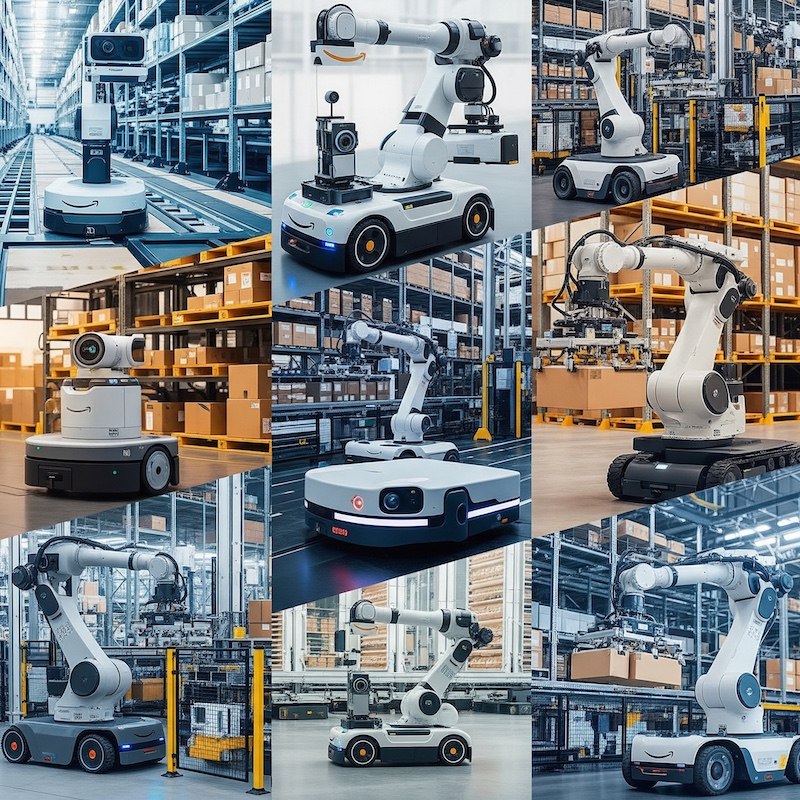Science
Amazon Plans to Automate Operations, Potentially Cutting 600,000 Jobs

Online retail giant Amazon is set to significantly expand its warehouse automation, which could lead to the reduction of over 600,000 job opportunities in the United States over the next eight years. Internal documents obtained by The New York Times reveal that Amazon’s robotics division aims to automate approximately 75 percent of its operations by 2033. This plan includes avoiding about 160,000 new hires by 2027.
The leaked documents outline potential cost savings of around $12.6 billion from 2025 to 2027, translating to a savings of about 30 cents per item shipped. In a related report, Business Insider shared an internal memo where Amazon identifies its next-generation robots, including a new tactile arm named “Vulcan,” as essential for flattening the company’s hiring curve over the next decade.
Despite the revelation of these plans, Amazon has publicly pushed back against the implications of the leaked documents. A company spokesperson emphasized that the information reflects the perspective of one team and does not depict the overall hiring strategy. The spokesperson further noted that Amazon is actively recruiting and has plans for seasonal hiring, indicating that the company does not intend to cease job creation entirely.
While Amazon argues that automation will alleviate workers from repetitive tasks and generate new roles, such as those in robot maintenance and engineering, analysts express concern that the company may shift from being a net job creator to a net job reducer, particularly in fulfillment centers.
The implications of these changes raise significant questions about the future of employment in the retail sector. As Amazon continues to leverage automation technology, the balance between efficiency and job creation remains a critical issue for both the company and its workforce.
The transition to a more automated workforce is not unique to Amazon, as many companies in various sectors are exploring similar strategies. However, the scale of Amazon’s plans and its impact on employment makes this situation particularly noteworthy.
As this situation develops, stakeholders, including employees, industry analysts, and policymakers, will undoubtedly be watching closely to assess the broader economic ramifications of such sweeping changes in one of the world’s largest employers.
-

 Technology5 months ago
Technology5 months agoDiscover the Top 10 Calorie Counting Apps of 2025
-

 Health2 months ago
Health2 months agoBella Hadid Shares Health Update After Treatment for Lyme Disease
-

 Health3 months ago
Health3 months agoErin Bates Shares Recovery Update Following Sepsis Complications
-

 Technology4 months ago
Technology4 months agoDiscover How to Reverse Image Search Using ChatGPT Effortlessly
-

 Technology1 month ago
Technology1 month agoDiscover 2025’s Top GPUs for Exceptional 4K Gaming Performance
-

 Technology2 months ago
Technology2 months agoElectric Moto Influencer Surronster Arrested in Tijuana
-

 Technology5 months ago
Technology5 months agoMeta Initiates $60B AI Data Center Expansion, Starting in Ohio
-

 Technology5 months ago
Technology5 months agoRecovering a Suspended TikTok Account: A Step-by-Step Guide
-

 Health4 months ago
Health4 months agoTested: Rab Firewall Mountain Jacket Survives Harsh Conditions
-

 Lifestyle5 months ago
Lifestyle5 months agoBelton Family Reunites After Daughter Survives Hill Country Floods
-

 Technology4 months ago
Technology4 months agoHarmonic Launches AI Chatbot App to Transform Mathematical Reasoning
-

 Technology3 months ago
Technology3 months agoUncovering the Top Five Most Challenging Motorcycles to Ride





















